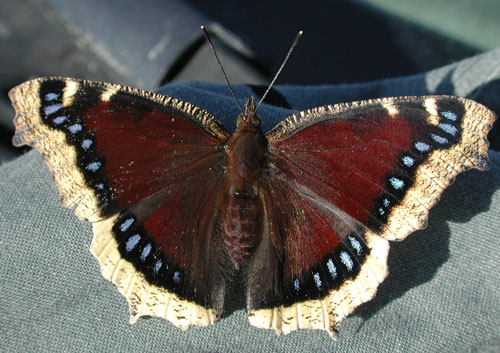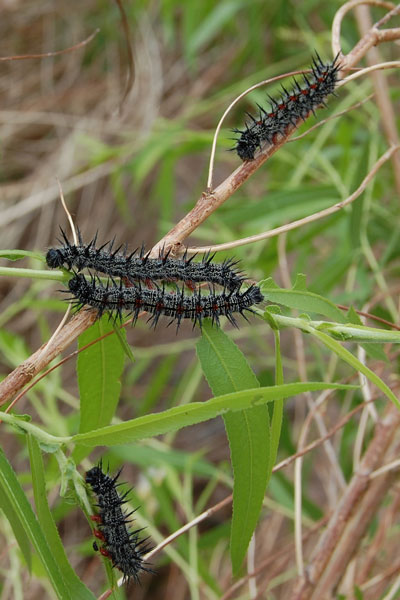Mourning Cloak
Nymphalis antiopa

This butterfly has just emerged from its chrysalis and is about to take its very first winged flight. Found along Mesquite Wash, Mazatzal Mountains, Maricopa Co., Arizona, USA.
Nymphalidae -- Brush-footed Butterfly Family
Over the winter months these butterflies hide within crevices created by peeling bark on dead or dying trees. As soon as temperatures warm in early spring they emerge to lay eggs upon twigs of willows. The spiny caterpillars stay together as they munch through fresh spring leaves. Finally they form a chrysalis and emerge into a winged butterfly a week to ten days later. In the Sonoran Desert, the Mourning Cloak, remains within riparian habitats where there are willows. The underside of the wings are very cryptic, allowing the butterfly to hide within and on bark of trees.
The lacy border in Arizona's Mourning Cloaks is paler than in eastern North America. Rarely do they sip flower nectar, preferring instead the sap of trees.

The caterpillars of the Mourning Cloak are spiny-looking and feed in groups in the open on Goodding's Willow (Salix gooddingii). Most insectivorous birds find them difficult to eat and so leave them alone.